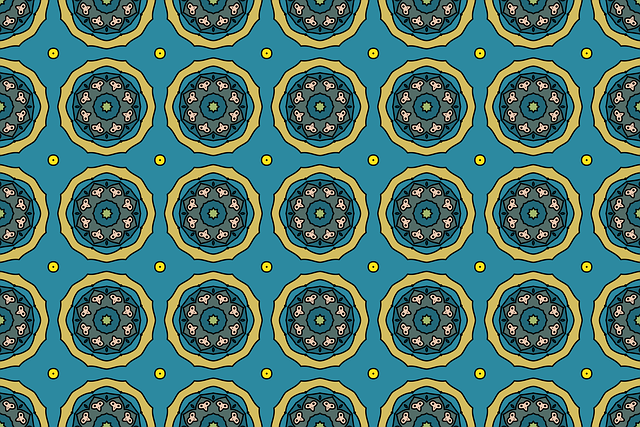Ceramic and porcelain tiles are top picks for bathroom flooring due to their durability, moisture resistance, and aesthetic versatility. Ceramic tiles, made from clay, offer insulation and easy installation but require sealing to prevent water absorption. Porcelain, denser and more glossy, undergoes a high-temperature firing process for superior strength and water resistance. Mosaic tiles stand out with intricate designs achieved through precise cutting and gluing small ceramic or glass pieces. Textured bathroom tiles, whether ceramic, porcelain, or mosaic, add depth and visual interest while remaining practical, catering to diverse aesthetic preferences and offering endless customization options. Professional installation is recommended for delicate mosaic designs to ensure longevity.
“Transform your bathroom into a masterpiece with ceramic, porcelain, and mosaic tiles—a trio that redefines both functionality and aesthetics. This comprehensive guide delves into the world of these versatile materials, exploring their unique properties and endless design possibilities. From understanding the composition of ceramic and porcelain to mastering the art of mosaic installation and selecting the perfect tile for your space, we unravel the secrets to creating a stunning and durable bathroom. Embrace the beauty and practicality of textured surfaces, enhancing both safety and visual appeal.”
- Understanding Ceramic and Porcelain Tiles: Materials, Durability, and Benefits
- – Composition and manufacturing processes
- – Advantages of ceramic and porcelain in bathroom settings
- The Art of Mosaic Tiles: Patterns, Designs, and Installation Tips
Understanding Ceramic and Porcelain Tiles: Materials, Durability, and Benefits
Ceramic and porcelain tiles are popular choices for bathroom flooring due to their durability, aesthetic appeal, and versatility. These materials offer a wide range of designs, colors, and textures, allowing homeowners to create unique and stylish spaces. Understanding the distinctions between ceramic and porcelain is essential when selecting textured bathroom tiles that align with your design vision and functional needs.
Ceramic tiles are typically made from clay, which provides them with excellent insulation properties. They are known for their affordability and ease of installation. Porcelain tiles, on the other hand, are crafted from a more refined form of clay called kaolin, making them harder and more dense. This construction contributes to superior durability and water resistance, making porcelain an ideal choice for high-moisture environments like bathrooms. Both ceramic and porcelain offer long-lasting performance, easy maintenance, and can withstand heavy foot traffic.
– Composition and manufacturing processes
Ceramic, porcelain, and mosaic bathroom tiles are crafted through distinct manufacturing processes that shape their unique properties and aesthetics. Ceramic tiles, often known for their durability, are made from clay and other mineral compounds. The raw materials are mixed, formed into shapes, and then fired in high-temperature kilns. This process results in a porous material that requires sealing to prevent water absorption. Porcelain, a type of ceramic, undergoes a more extensive firing process, making it denser and less permeable than ceramic tiles. Its manufacturing involves similar steps but with higher temperatures and pressures, leading to a harder, more glossy surface. Mosaic tiles, on the other hand, are composed of small pieces of ceramic or glass arranged in patterns and bonded together. This technique allows for intricate designs and textured bathroom tiles, offering both visual appeal and creative flexibility. The manufacturing process involves precise cutting, arranging, and gluing, enabling the creation of complex artistic expressions suitable for various interior spaces.
– Advantages of ceramic and porcelain in bathroom settings
Ceramic and porcelain tiles offer numerous advantages for bathroom settings, making them popular choices among interior designers and homeowners alike. One of their key strengths is durability; these materials are designed to withstand high moisture levels, which is essential in humid bathroom environments. They are less prone to warping or fading compared to other types of flooring, ensuring a long-lasting finish that maintains the aesthetic appeal of your space. Additionally, ceramic and porcelain tiles provide excellent insulation, helping regulate the room’s temperature and preventing cold floors. This feature is particularly beneficial for those seeking comfort and warmth in their bathroom.
Another advantage lies in their versatility and design options. These tiles are available in a vast array of colors, sizes, and textures, allowing you to create unique patterns or maintain a more subtle, elegant look. Textured bathroom tiles can add depth and interest to your space, enhancing visual appeal without sacrificing practicality. Whether you prefer a modern, minimalist aesthetic or a traditional, ornate design, ceramic and porcelain tiles offer a wide range of possibilities to suit every taste and style preference.
The Art of Mosaic Tiles: Patterns, Designs, and Installation Tips
Mosaic tiles offer an unparalleled opportunity to infuse your bathroom with unique style and visual interest. The art of mosaic involves arranging small individual pieces, often stone, glass, or ceramic, to create intricate patterns and designs. These tiles can transform a mundane space into a captivating oasis, blending artistic expression with functional beauty.
When working with mosaic tiles, it’s essential to consider the overall aesthetic you wish to achieve. Patterns range from classic geometric shapes to abstract, organic forms, allowing for endless customization. Textured bathroom tiles made from mosaic art can add depth and dimension, creating visually appealing accents or even entire walls. Installation requires careful planning and precision, ensuring proper spacing and alignment for a seamless finish. Professional installation is recommended to guarantee the longevity of these intricate designs, which can be more delicate than traditional ceramic or porcelain tiles.
When it comes to transforming your bathroom into a spa-like oasis, ceramic, porcelain, and mosaic tiles offer a world of possibilities. These materials not only enhance the aesthetics but also provide durability and water resistance, making them ideal for high-moisture environments. Whether you opt for the classic appeal of ceramic, the premium look of porcelain, or the artistic touch of mosaic tiles, each style adds texture and depth to create a unique and inviting space. So, why wait? Dive into the world of textured bathroom tiles and watch your dream bathroom come to life.
